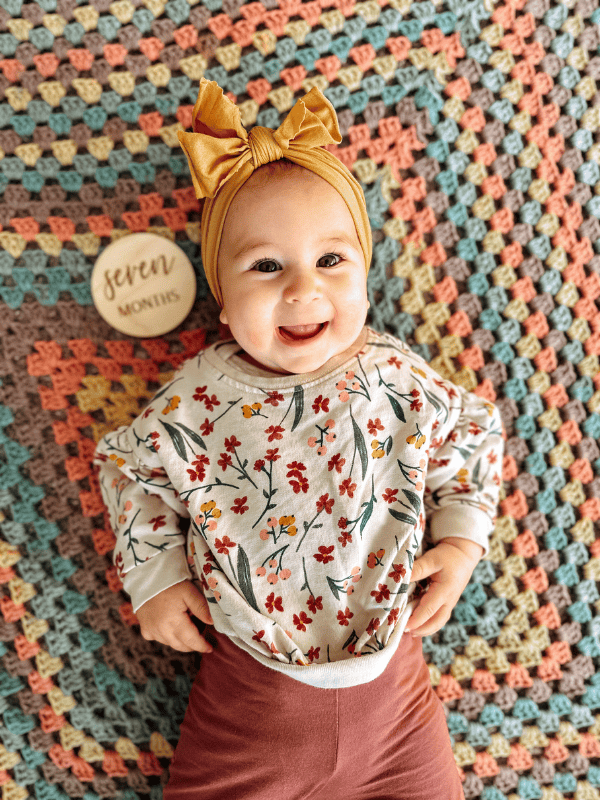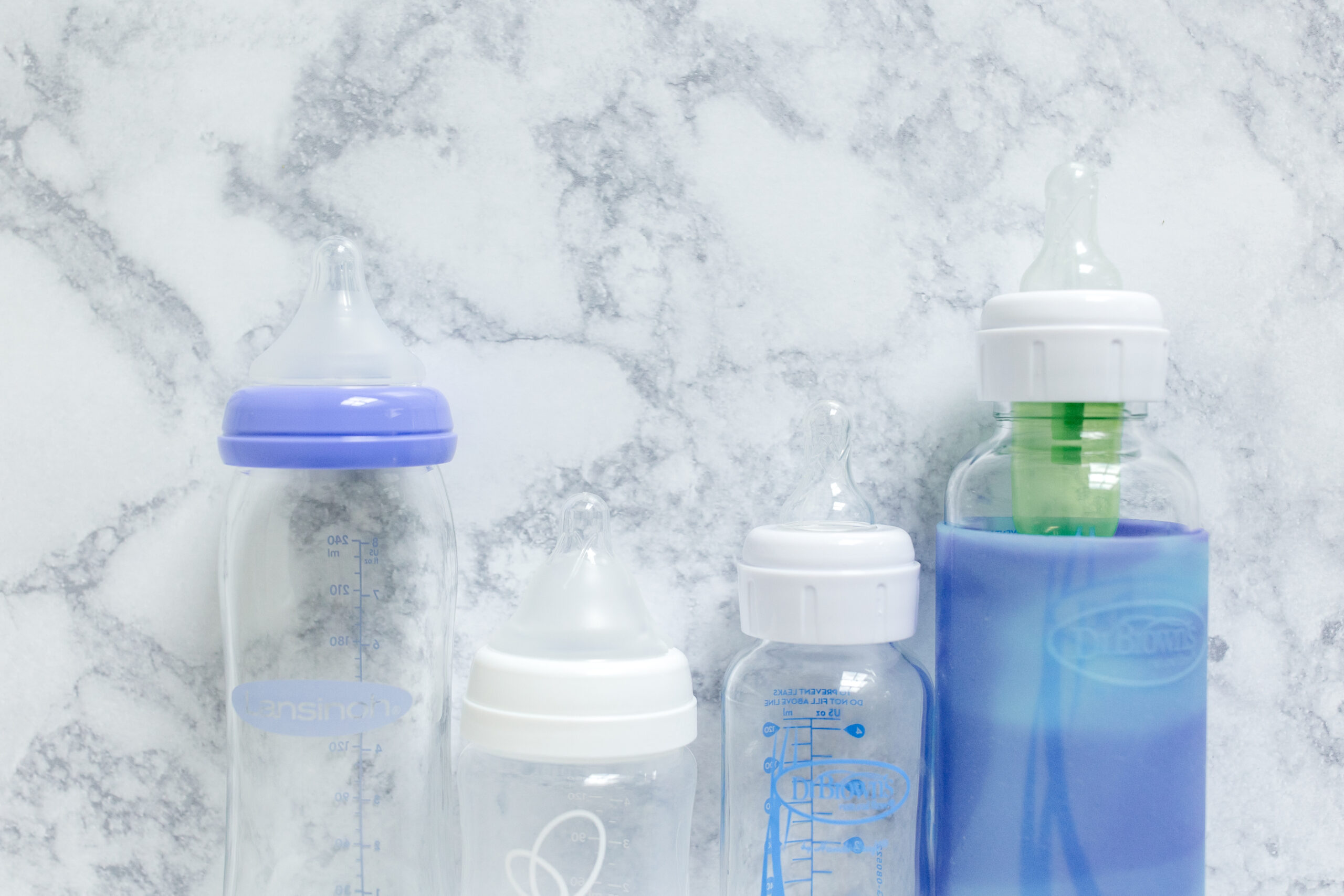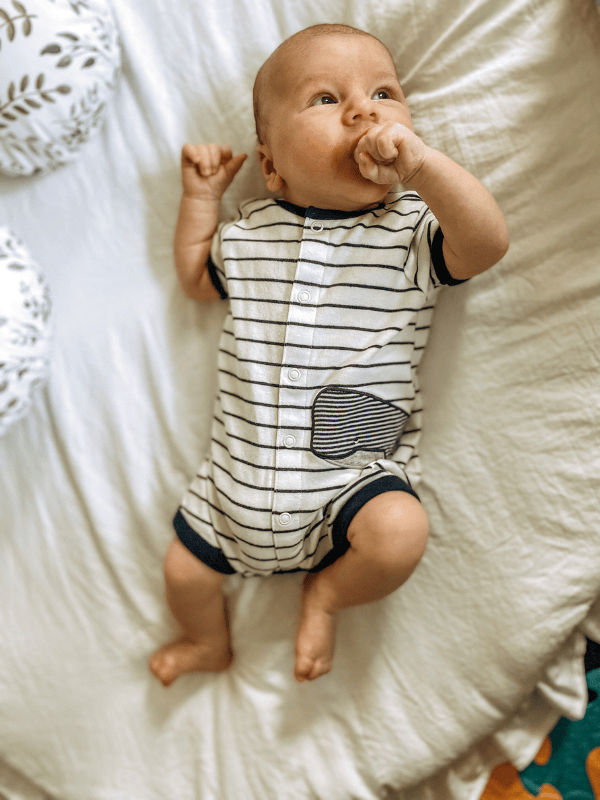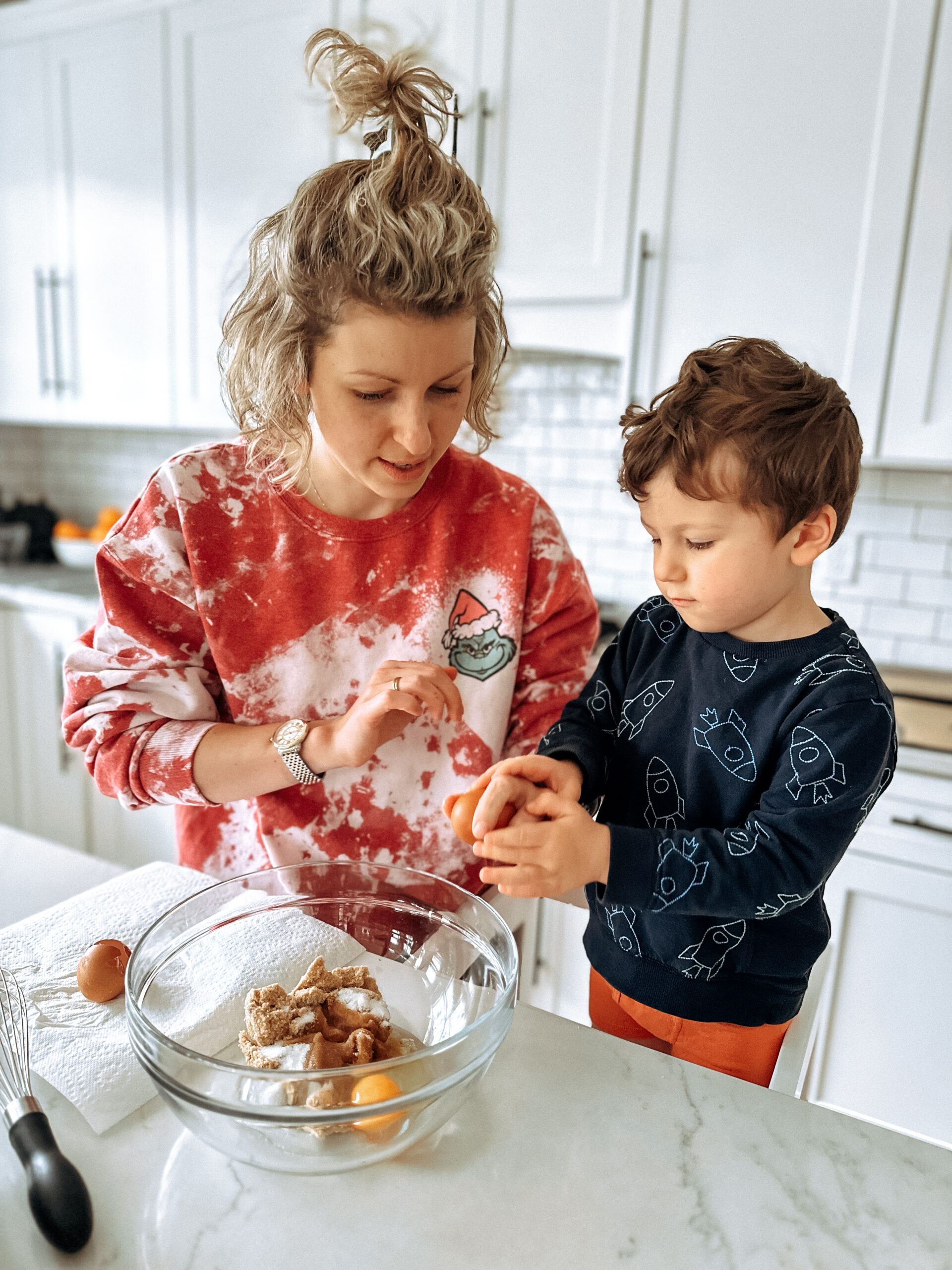This page contains affiliate links. We will receive a commission on qualifying purchases using these links.
The Feeding Specialists break down what is important about sitting upright in the high chair while eating.
Is it time to bust out that high chair and start solids? What an exciting journey that’s about to begin! Let’s check in about high chair and feeding safety so you can feel confident in your baby’s positioning and prepare for those first bites. There are endless high chair options, so when choosing a new one or setting up what you have at home, it’s important to know why certain features matter.
When your baby is seated in the high chair for solids, we want to see the following:
-
Full upright body (not reclined or leaning)
-
Elbows rest on the tray with tray hitting at the stomach (not the chest)
-
Feet have somewhere to rest (depending on your high chair, they may not hit a footrest yet, so we can show you what to do if that is you!)
Hunching over In the High Chair
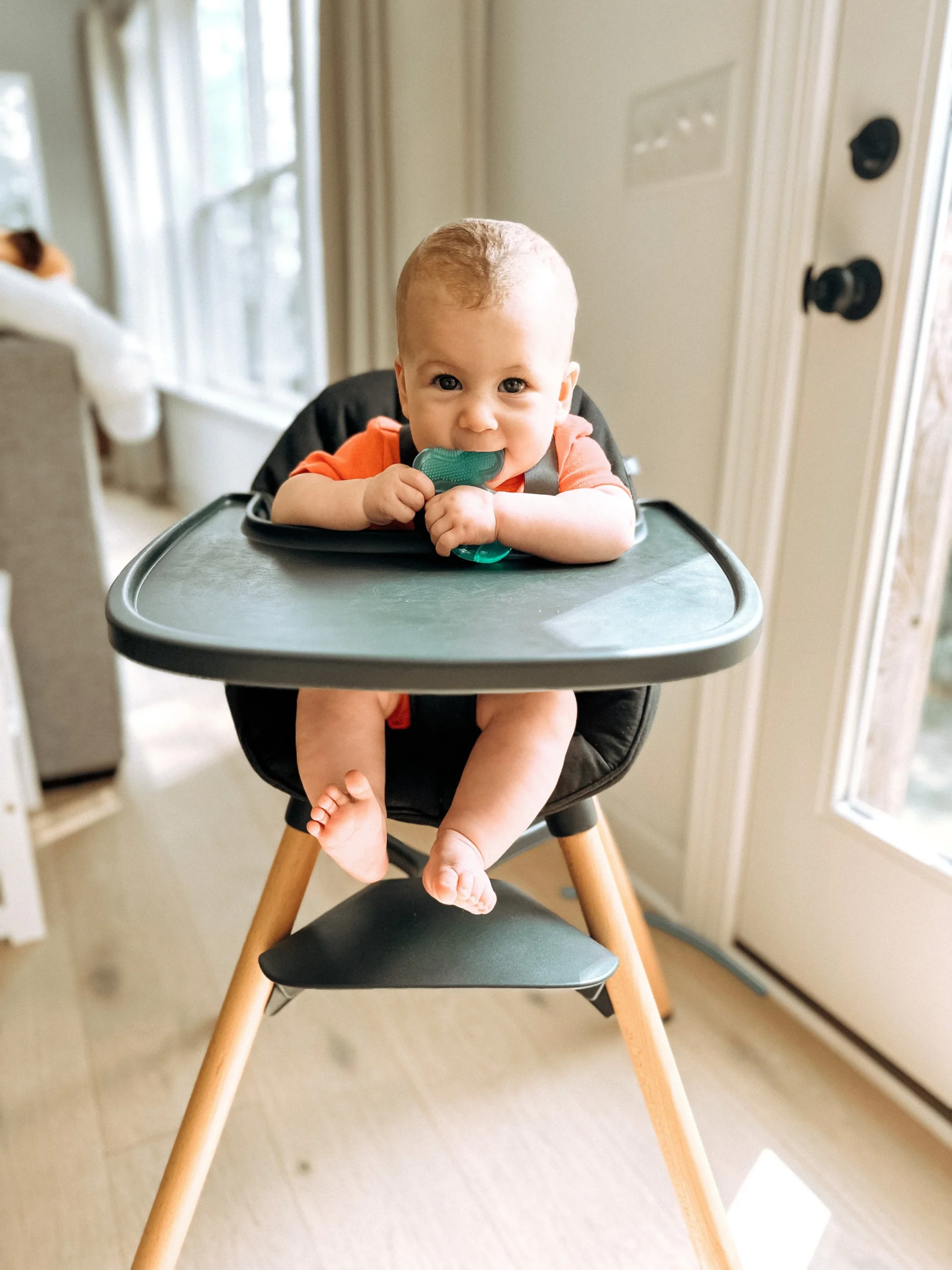
This baby is hunching . This is not an optimal position for baby, as they cannot fully extend their arms to reach the food on the tray and they will likely fatigue during a meal.
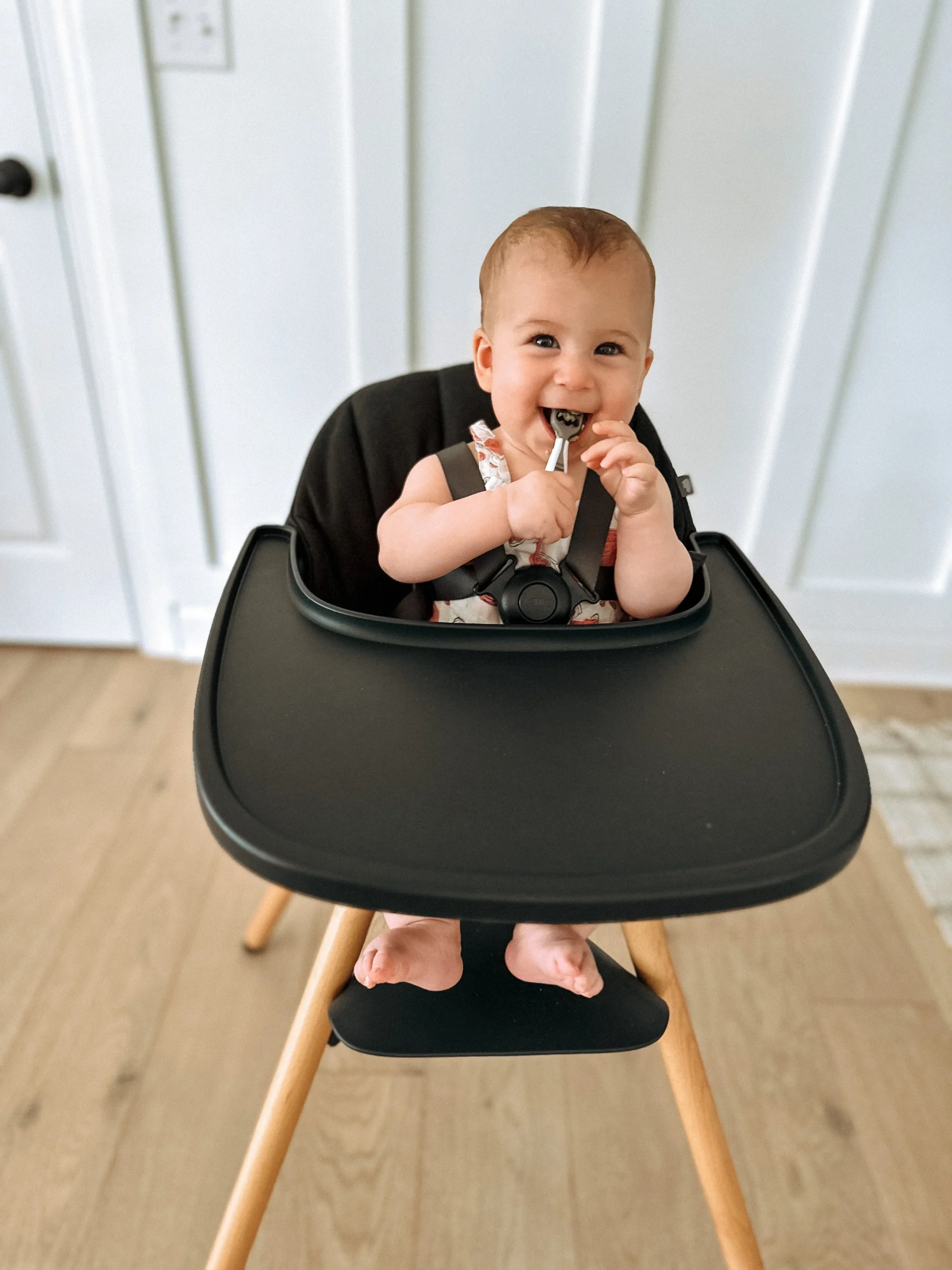
This baby is sitting upright. This is a much more optimal position for baby, as they can reach all of the food and utensils on the tray and it’s much safer for swallowing!
Sit Baby at a 90-90-90 Position
You may hear a lot about the “90-90-90” position for safe feeding, but what does this mean?
Baby’s body is supported at the hips, knees, and ankles, with elbows resting on the tray or table- at all of those joints, baby’s body bends at a 90 degree angle.
Giving babies this support in those areas, sets them up for using their fine motor skills to explore and eat foods. While some chairs have the reclining feature (which is often marketed as an up-sell or highly coveted feature), this does not ensure safe feeding with solids. Feeding baby in a reclined position is not recommended. Oftentimes parents are told to start solids before their little one has the trunk and head control necessary to sit upright and they think reclining baby back is the answer. It’s not. Upright positioning allows for airway protection while eating food. As feeding specialists, we encourage upright sitting while eating. See this blog on what sitting up has to do with starting solids, and reference this checklist for starting solids to make sure baby is ready to begin eating foods.
Your High Chair Should Have a Footrest
Something parents often forget about is the footrest. When it comes to foot support, think about our own bodies at high top tables at restaurants. Do you find yourself looking for a ledge to rest your feet? Or if there isn’t one, are you constantly shifting your weight or crossing and uncrossing your legs? Leaning on the table top? It’s your brain’s way of naturally seeking stability. This is why a footrest is so important! Babies starting solids are developing trunk and core muscles, and they really need as much stability as they can get. This is also why using a travel high chair that clips to the counter is not recommended for frequent use when starting solids. We want to limit dangling feet if we can!

Adjust the footrest so baby’s feet touch, allowing for the 90-90-90 positioning.
If your high chair is supportive at the hips and baby’s feet don’t bend at the knee to dangle down, that can be ok. Feet planted on a footrest is the most optimal position, but that doesn’t mean you have to go out and get a new high chair if your high chair’s footrest isn’t so functional. If your little one is well supported at the hips and their legs go straight out when starting solids, I wouldn’t be as concerned. Being fully upright and not leaning is MOST important.
Leaning in the High Chair
When you sit your baby in the high chair and they are hunching over or leaning, it’s important to check their gross motor skills combined with the high chair set up. Sometimes, it’s more of an issue with the high chair than core strength development. If your baby is sitting up independently on the floor and leaning in the high chair- some investigating should be done. Baby is likely not supported well in the bucket of the seat and they are leaning for stability.
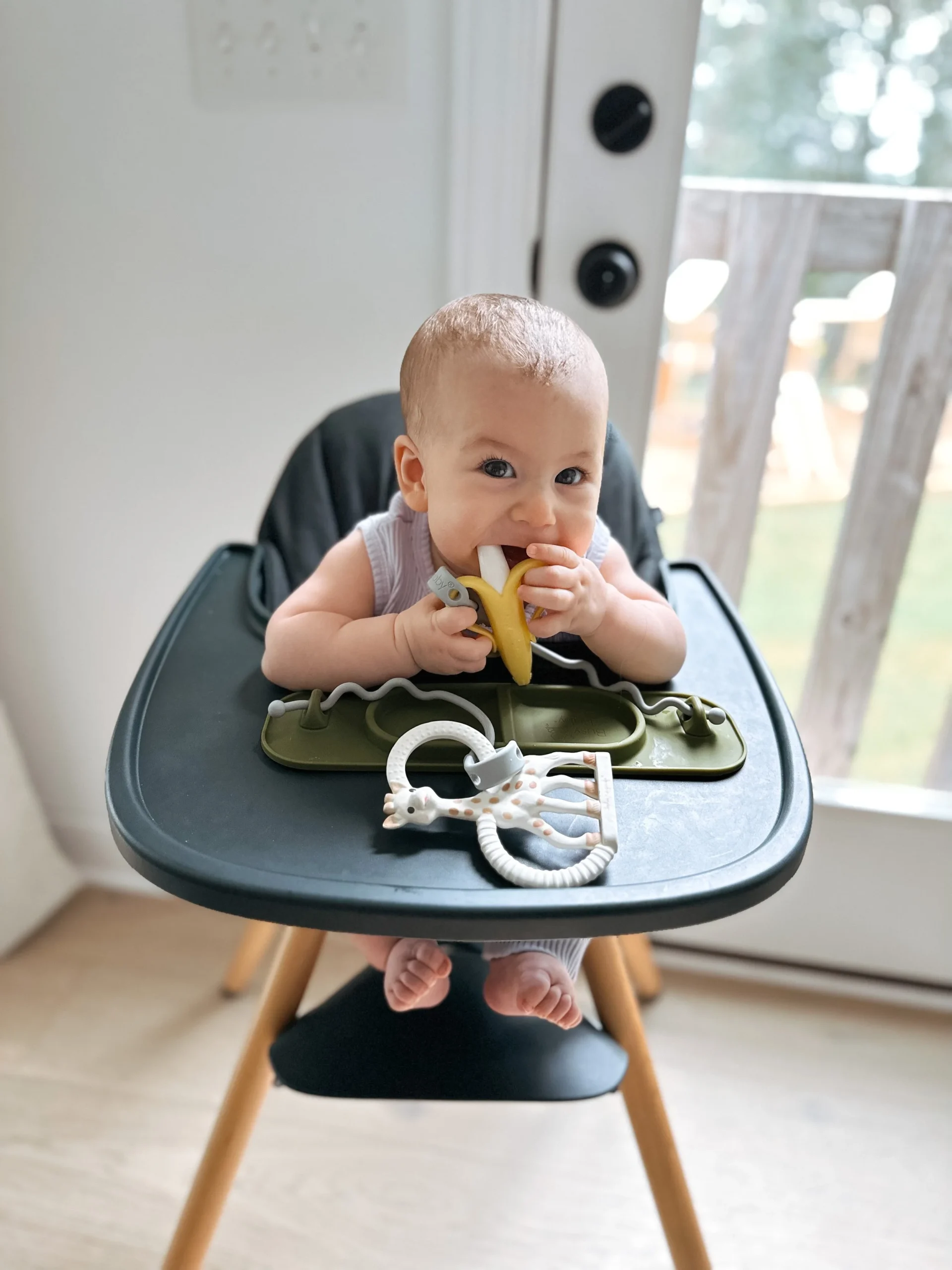
This baby is leaning in the highchair. This baby also isn’t yet sitting independently, so she isn’t ready for solid foods just yet!
This leaning is a concern because if baby is hunching forward or leaning over and food is presented to them, they are not in the safest position for moving food in their mouth and swallowing. And oftentimes, these babies show us they don’t feel supported by showing minimal interest in eating or exhibit crying or fussing in the high chair. We can read their disinterest as a possible cue of needing more support. It’s ok to wait just a few more weeks for baby’s gross motor skills to improve if that is the underlying reason for leaning!
Making your High Chair More Supportive
Let’s work with what you’ve got and talk modifications. If your baby is reclined too far in their high chair, so that they have to really work to sit up to engage with food on the tray, add a cushion to the high chair or a folded towel behind their back.

An infant or supportive cushion can make a big difference! These are great to use when baby is smaller and needs more support, and then take them off once baby grows! It also increases the lifespan of your high chair. This one is our favorite!
If baby’s feet are dangling:
-
Purchase a foot rest compatible with your high chair
-
Move the existing foot rest up
-
Add a resistance band for them to rest their feet on
-
Atack a box or book on the footrest if it cannot come up
-
Or try to pull a chair up to the high chair for baby to rest their feet
If baby is leaning to one side while seated upright, add some rolled up towels to each side or one side, or insert a cushion that gives more side support.
What High Chair to Use When Traveling
When considering travel high chair options, there are many choices, but most are not supportive enough for a little one beginning solids. Make sure you try sitting baby in these chairs before you travel and see where baby needs support – at their hips or feet. This one is our favorite at Eat Play Say because you can put it on the floor and the floor acts as baby’s footrest. Roll up towels on either side of baby if they need more support and this chair will last you until toddlerhood! And it collapses down into a bag.
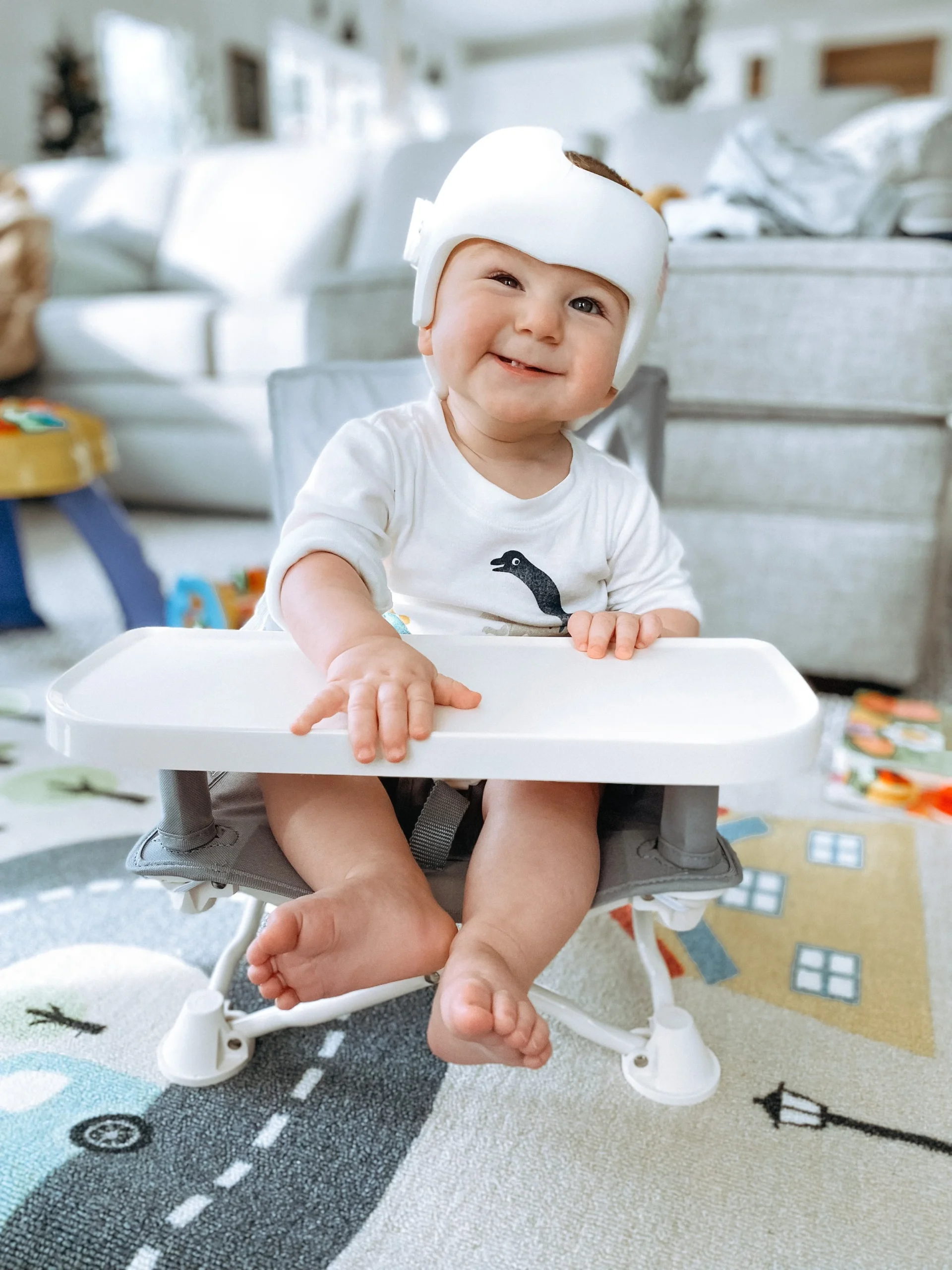
Use travel high chairs with caution. These are great for on-the-go, but due to their minimally supportive nature, we don’t recommend for consistent, everyday use!
Another fan favorite from the occupational therapists and physical therapists on the team is the UpSeat! It doesn’t collapse down, but it may be small enough to travel with you in the trunk.
Our Favorite High Chair
As feeding specialists, we have seen and tested many different high chairs. Lalo has consulted with experts to make sure your baby is supported in all the stages of solids and is our top pick as feeding professionals. My code “EATPLAYSAY” saves 10%!
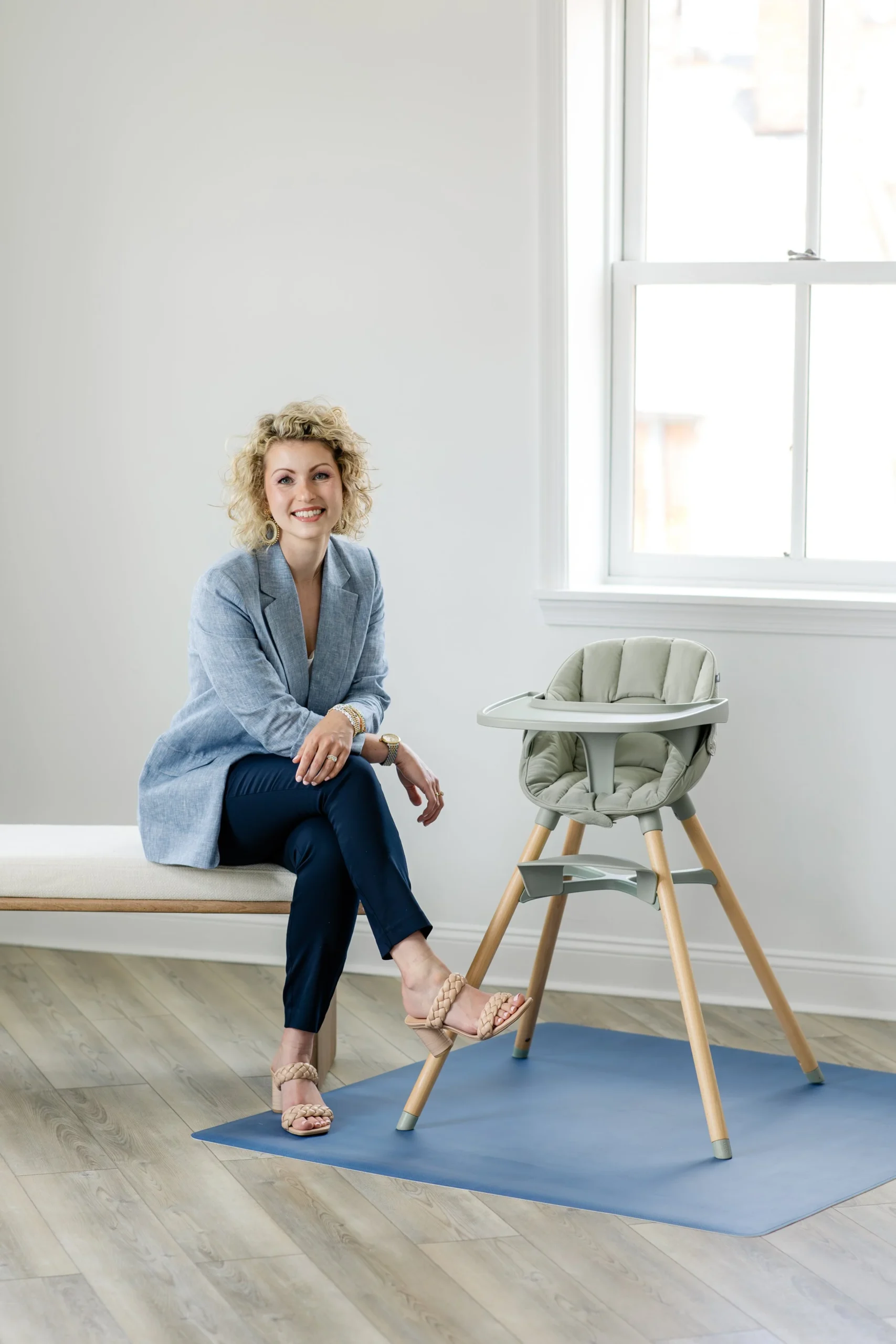
Our high chair top pick! Infant insert. Support cushion. Adjustable footrest. Machine washable cushion. Easy to clean. It’s a great choice and becomes a booster and a playchair as baby grows into a toddler and preschooler!
Check out additional, carefully selected feeding tools below!
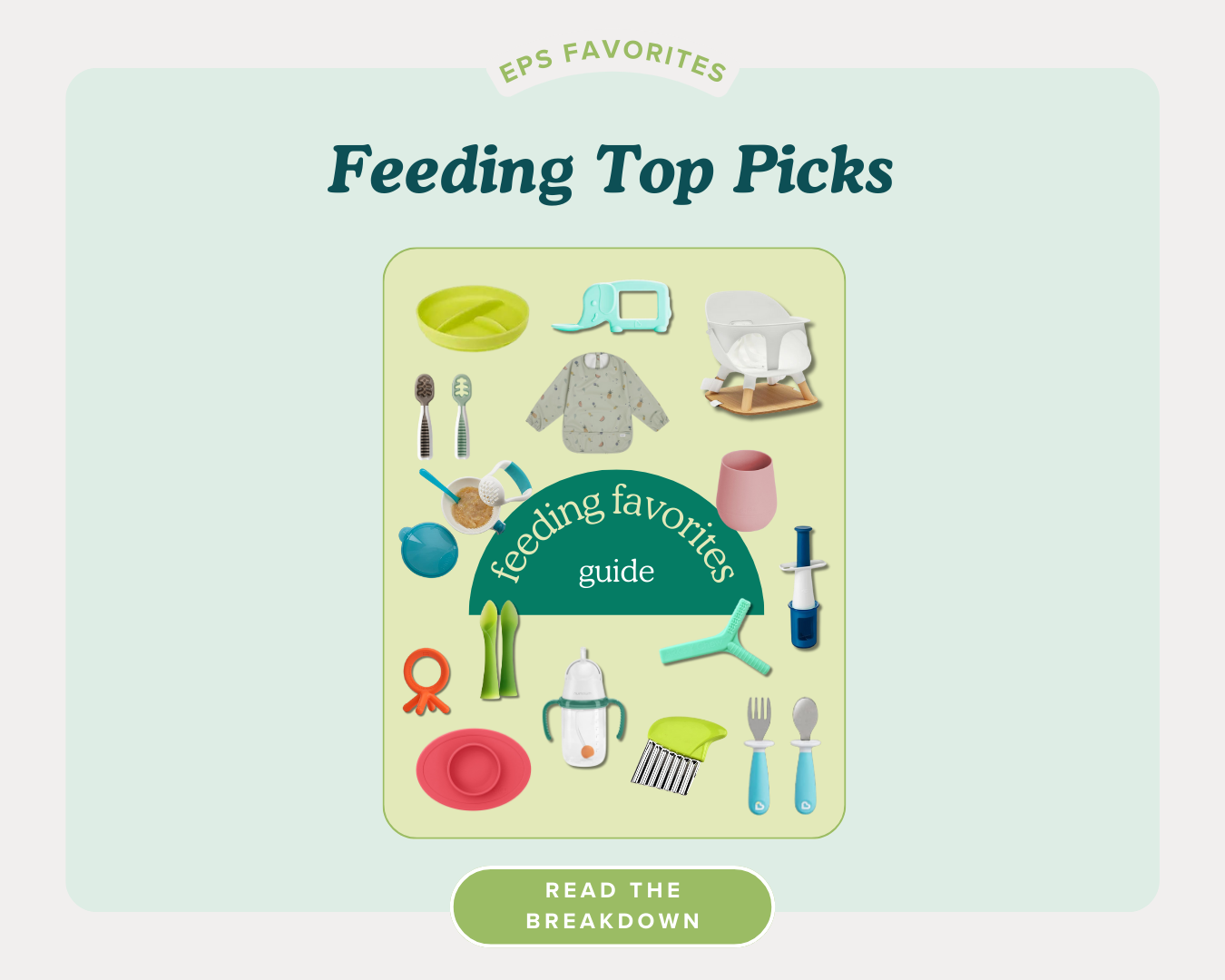
Overall, if you’re questioning baby’s gross motor skills, support from a physical therapist can be beneficial. If you’re questioning baby’s oral motor readiness for solids and skills, or you’re running into difficulty with starting solids, support from a feeding specialist can help! You can book a 1:1 consultation with a specialist today and check out more feeding resources below!
Ready to feel confident about Starting Solids?All you need, all in one place.










